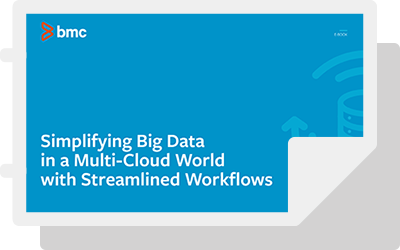In this interview, I talk with Alon Lebenthal, a Senior Solutions Marketing Manager at BMC, of what the cloud hype is about; it seems that it is all we hear about in the tech and business world.
Q. It seems that the cloud is everywhere these days and all organizations are either on the cloud or in the process of moving to the cloud – Is that true? What’s driving this?
Alon Lebenthal: Yes, the cloud is being adopted faster than ever and that includes both public and private clouds and sometimes a combination of both. Actually, nowadays an increasing amount of organizations are using more than one cloud platform. The reasons for the cloud adoption are clear; the cloud is allowing companies to scale at the business demand in a very flexible way and the result is that cloud has become the platform of choice of many new developed applications.
So, as organizations move to the cloud they are also leveraging the extensive set of services provided by the cloud Vendors as well as the overall growing cloud Ecosystems including infrastructure and solutions big data machine learning etc.. Another thing to keep in mind is that the richness of the cloud Ecosystem introduces new levels of complexity as companies run their applications in diverse infrastructure and take advantage of new technologies.
Q. You mentioned the word “complexity” – why is it so complex?
Alon: First, the cloud is introducing new technologies daily. But more than that, these technologies usually don’t replace everything that was running in the organization’s environment before. So, the result is a need to run application workflows across a web of diverse infrastructures and a growing number of technologies and applications. Orchestrating these diverse workflows is becoming more and more complex and while there are multiple automation tools, experience shows that integrating all these moving pieces is quite challenging. In fact, developers find themselves spending too much time, precious time, on scripting and error handling what can be described as operational plumbing instead of being productive and spending their time and efforts on developing the application itself. Naturally, this complexity and the associated scripting may result in delays with moving the applications to production or even put the entire project at risk.
3. How can you manage this complexity and assure that business applications are well orchestrated and integrated?
Alon: Our experience is that if you want to accelerate application delivery in the cloud you need a true application workflow orchestration product that can simplify the automation of the business processes across diverse infrastructure, data and applications. It needs to be platform agnostic and be able to orchestrate the workflows wherever these run as well as being able to absorb new technologies. So whatever technology the organization decides to use in the future as a part of the application workflow, you will be able to orchestrate it as well, and integrate it with the other parts of the business. It’s all about end-to-end orchestration of the application workflows as well as the end-to-end visibility of the workflows.
4. Can you give me a typical use case for the need of an application workflow orchestration?
Alon: Let’s talk about big data or data pipelines. Many of the organizations that are implementing big data these days are doing it in the cloud and if we look at the typical big data process it usually consists of a few steps. You need to ingest the data, store that data in the cloud, process the data and finally, analyze the data and provide insights to the business. Each step may include different technologies, and different set of tools being used.
In fact, cloud vendors like MS Azure, AWS and others are offering a long list of good and efficient solutions on their platforms to support these big data processes such as: storing the data, processing data, analyzing data and so on. So, to take advantage of all those cloud vendors offerings. What customers do is move data from on premise to the cloud and then they leverage the storage process analytics capabilities of these services. It’s complex and it is difficult to manage, so what you really need is an application workflow orchestration tool that can simplify this process, run the workflows end-to-end and ensure the Service levels are met.
5. So is it mostly about running your workflows anywhere? On-premises, on public or private cloud or any combination of those?
Alon: It’s about being able to orchestrate workflows wherever they run and being flexible about it so if there will be changes in the future, you can easily adjust to those changes. But more than that, it’s also about simplifying the orchestration process and making it reliable and ensuring that all the workflows run on-time, every time. It includes not only managing the workflows, but also ensuring that the SLAs are met, taking care of auditing and governance of the application workflows and more.
6. Are there data security concerns with using public cloud or a combination of public and private cloud services?
Alon: Well obviously these days cloud vendors are provided a secure way to manage data in their platform. But if we look at it from application workflow orchestration standpoint then naturally when you move data from one place to another, you need to ensure that the data you are transferring is well monitored and well managed. As I mentioned, auditing and governance is extremely important, especially when it comes to transferring data between platforms and transferring data to the cloud, you need to be able to ensure that the data you have is the right data and also to have a good understanding of who touched the data during the process and how it was managed.
To learn more, check out Control-M on the Cloud
We will also be at the Cloud Expo in Santa Clara from June 24th to the 26th. We hope to see you there at booth #400! Also, don’t miss my June 25th presentation titled, Application Workflow Orchestration in a Multi Cloud World.







